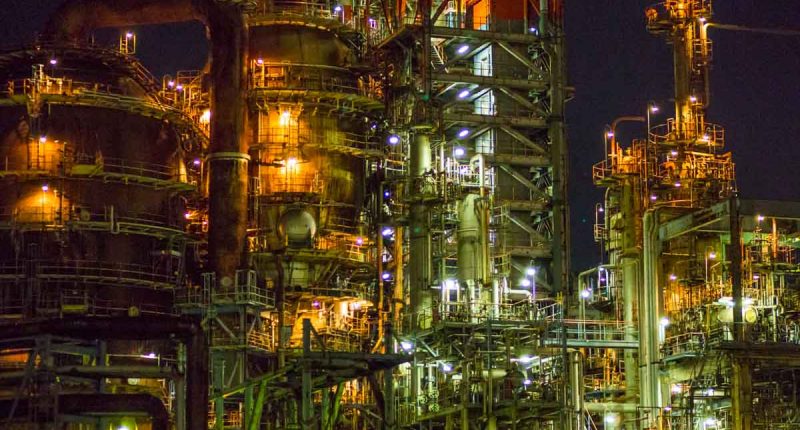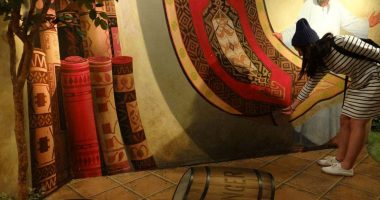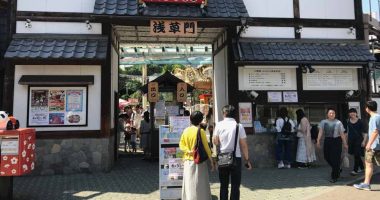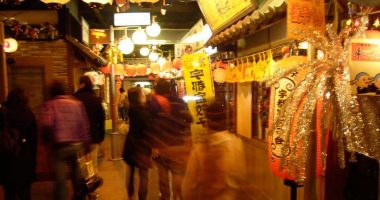The idea of hopping on a boat to cruise around industrial plants might seem peculiar, but it is an activity that is increasingly in demand—in no small part due to the stunning photographs of factories at night that have been uploaded onto various social media platforms. While generally regarded as an eye-sore during the day, the lights of the factories transform the metallic pipes, smoke funnels, and flame-throwing towers into fascinating spectacles at night and prime shooting opportunities for photographers.
While there are many clusters of factories along the shore of Tokyo Bay, the reclaimed land near Kawasaki is the most popular for night cruises, and several companies offer trips in small boats that can easily navigate the narrower inlets leading to the factories. Most are 90 to 120 minutes long and cost around ¥4,000, usually departing from Yokohama. I booked the “Factory Night Scenery Exploration Cruise” (工場夜景探検クルーズ) with Keihin Ferry which departed from Osanbashi Pier in a commuter boat, but there are other courses which take you in a speedboat or yakatabune. You can book directly through the website of the cruise companies, but tabione.com is a good place to start to see what’s available (Japanese only).
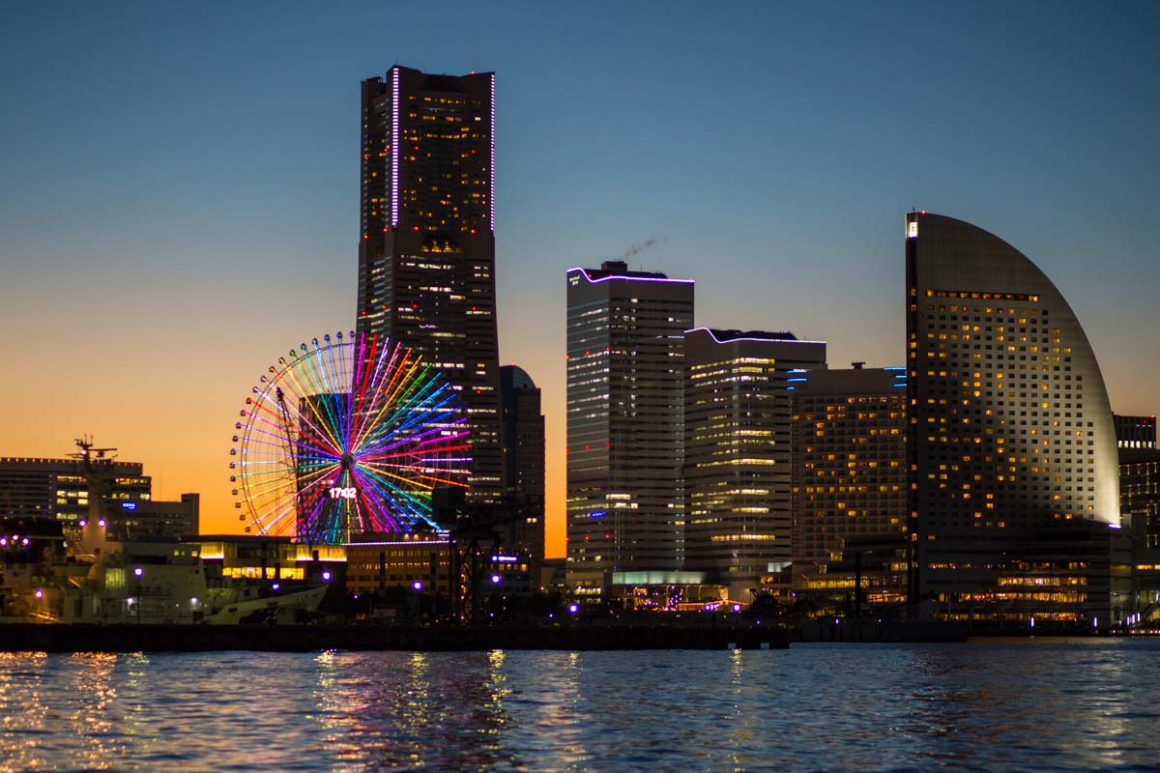
My cruise departed at 5pm and the first stop was actually just outside Minato Mirai port to look back on the sunset over Yokohama. And what a sunset! I was lucky enough to have joined the tour on a cloudless day and there was a red sky over Yokohama.
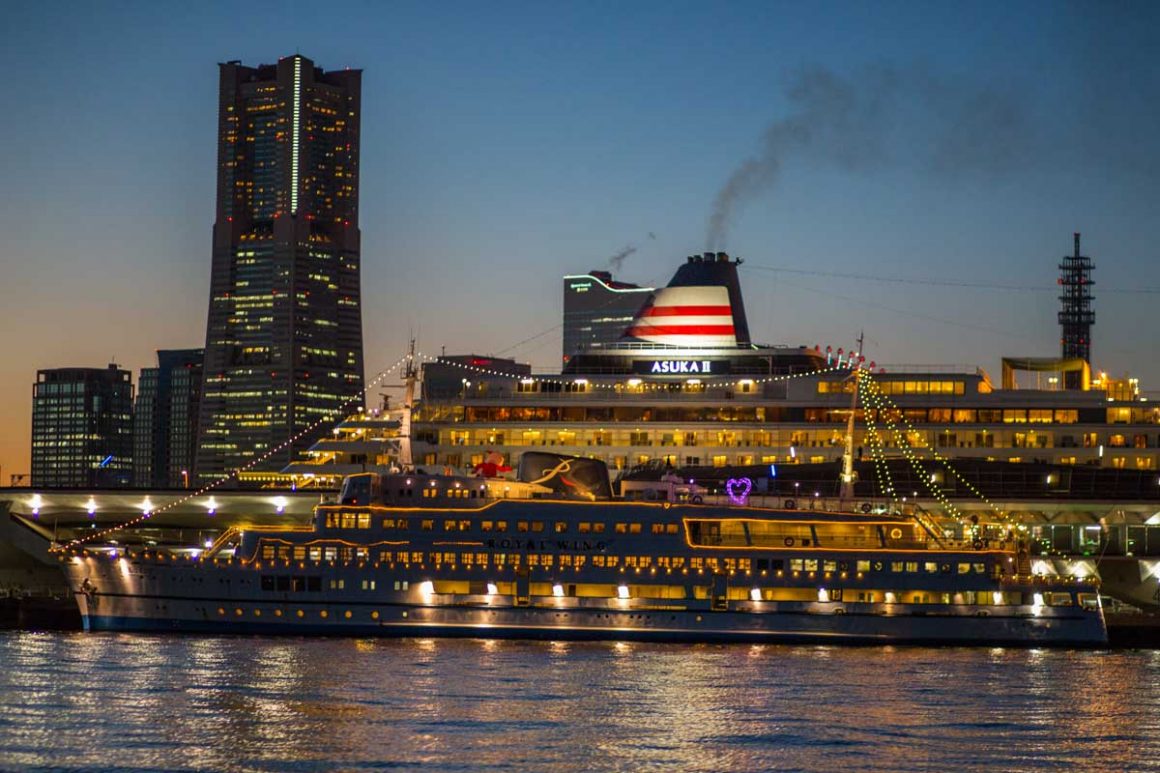
After this brief stop, the boat sped past Yokohama Bay Bridge and into the water channels of Kawasaki where the factories stand. The tour guide provided explanations over the speaker about each plant (who owns it, what it makes, etc.), interspersed with a little bit about the history of the area where relevant. Unfortunately, these explanations are only in Japanese—the factory night cruises haven’t quite caught on enough for the companies to want to offer multi-lingual tours, but that may only be a matter of time.
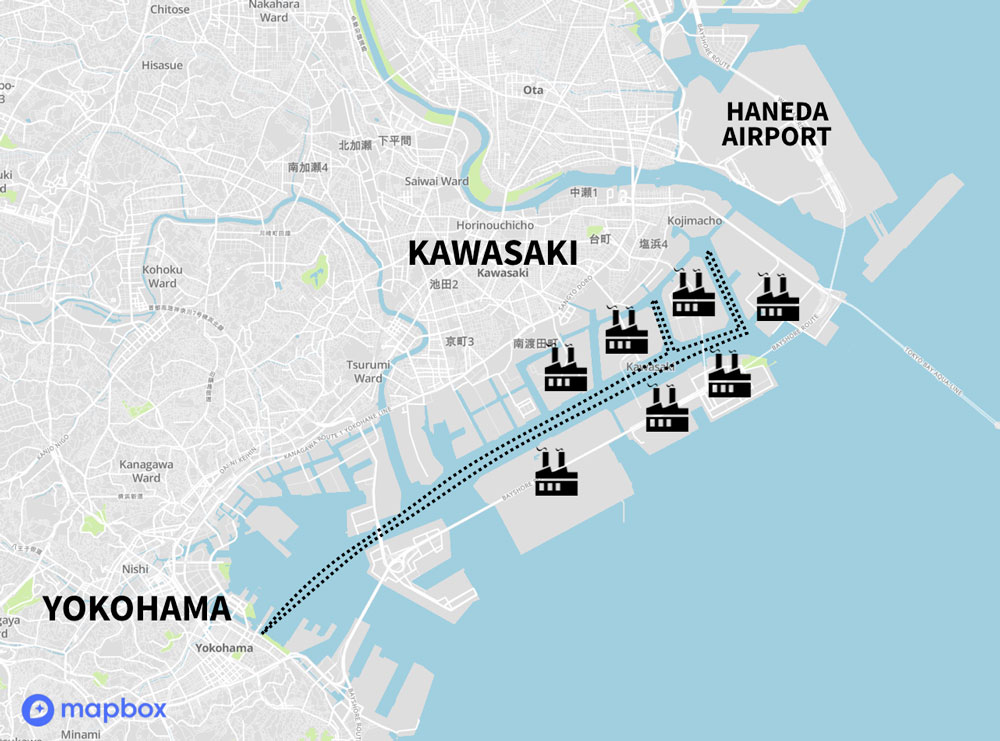
Not everything is worth photographing: there are landfills and plain old warehouses among the belching factories of the conglomerates. These only got a brief explanation and the boat headed onwards to the first stopping point, arriving about 15 minutes later, by which time the sun had set. I did take some shots from the moving boat but none of these came out any good. Best just to enjoy the ride and wait for the next checkpoint.
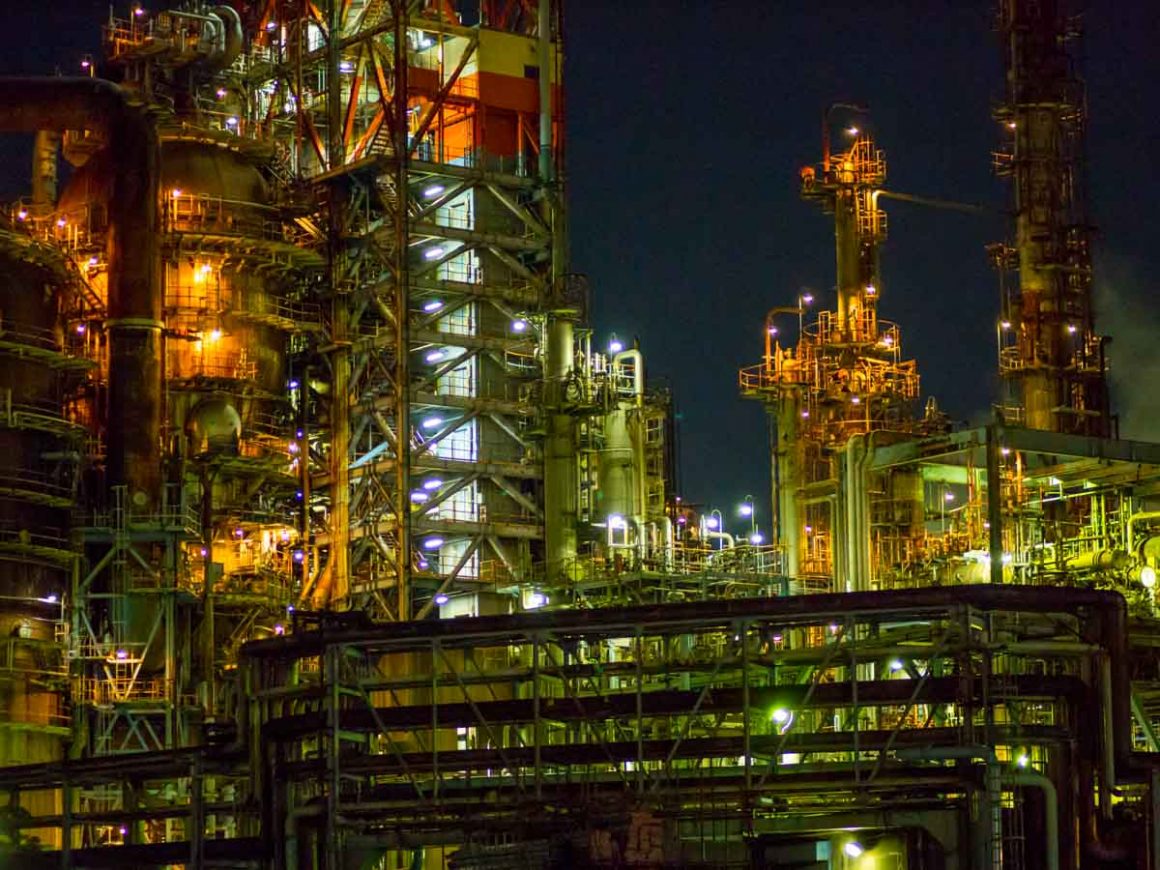
In total, the boat stopped about 7-8 times during the cruise to give passengers a chance to take photographs. In a couple of places we were also allowed onto the bow of the boat, and several passengers including myself made their way out while firmly clutching the hand rails (apart from the fact that we didn’t want to drop our cameras, the water below would be freezing in December).
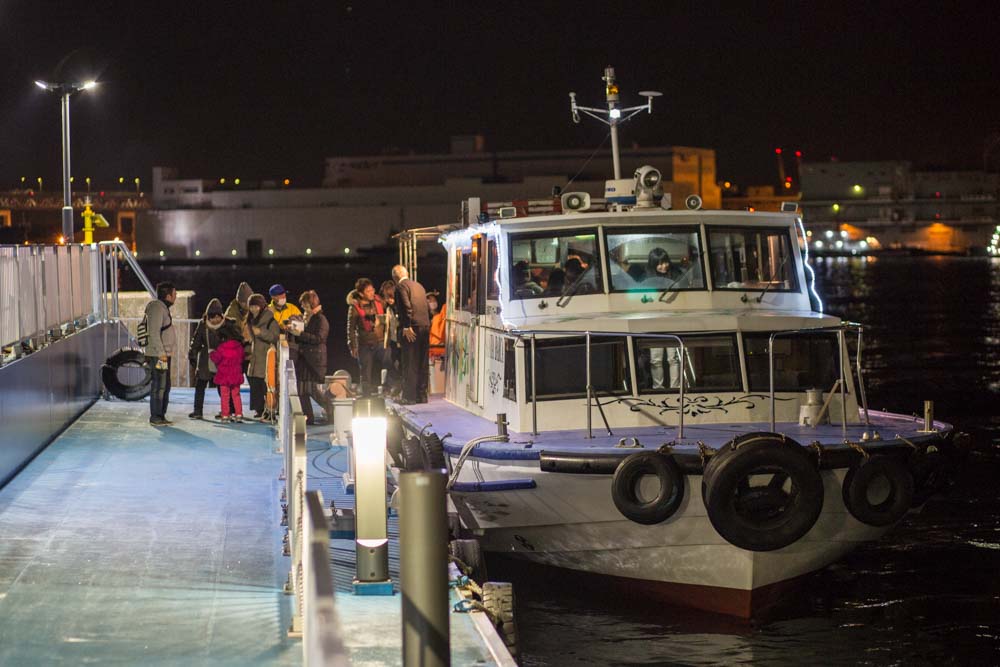
As geeky as a factory cruise might seem, these tours are not only for keen photographers. Indeed, of the 30 or so passengers only a handful came armed with high-end digital cameras; most were content enjoying the scenery. And at just under ¥4,000, I’d say it was well worth doing if only for the experience. Incidentally, if you want to see the factories at night but the thought of a boat tour doesn’t appeal, companies such as Hato Bus offer coach tours of the Kawasaki area starting from about ¥6,000.
Tips for Photographing the Factories from the Boat
Needless to say, getting a decent photograph of the factories from the water is difficult. The scene is dark, the boat is bobbing up and down, and the spotlights that make the metal pipes and towers so interesting to photograph can deceive the camera into thinking that there is more light available than is really the case. Many of the night shots of factories on the internet are in fact long exposures taken from a sturdy tripod on the ground. Alas, you do not have that luxury here. But with a little preparation you can get a good shot, and the narrow canals along which the boat travels lets you shoot parts of the factories that wouldn’t be accessible from land, anyway.
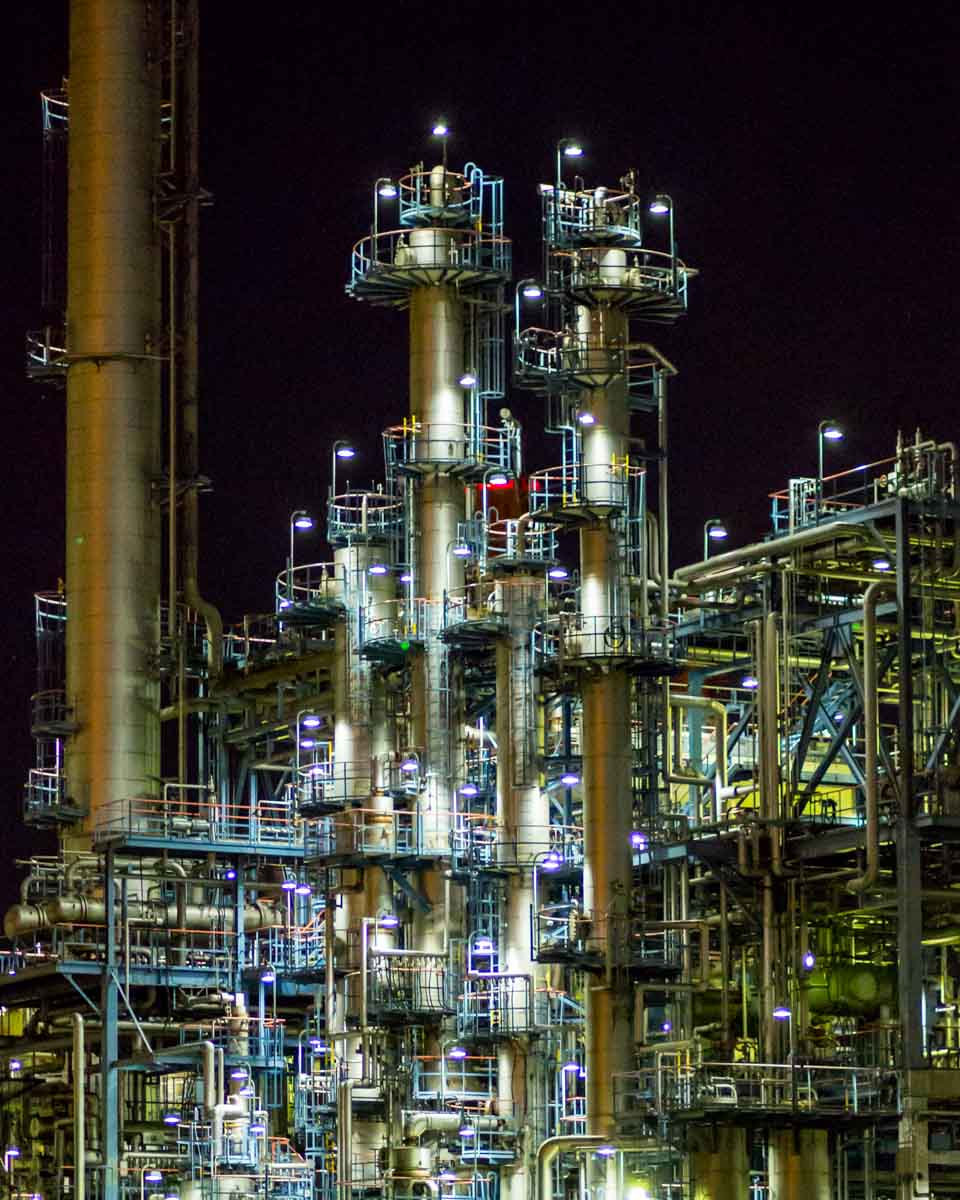
When the boat is at a standstill any shutter speed less than 1/40th of a second usually results in a blurred photograph—and it’s only above 1/80th that you can be almost sure of a sharp image (with image stabilization you could lower these times a little). But keeping good image quality with these relatively fast shutter speeds in low-light is not easy. You need a good camera capable of going to an ISO above 4000 without introducing so much noise that the image becomes unusable, as well as a fast lens—at least f/2.8, ideally faster. The boat gets within 100-200 meters of the factories so a 50mm or 85mm lens is ideal (fixed f/1.8 50mm lenses can be bought new for about $120). Below are a few tips to follow to help you get the best shot:
- Use the lens “wide-open” (set the aperture to its lowest value)
- Take the photographs in RAW format
- If your camera has a high-speed shoot setting use it and take 3-4 shots of every scene. Even the small waves hitting the boat can be enough to blur the image, so take multiple shots should mean that you’ll end up with one “keeper”
- If you’re still struggling to achieve fast enough shutter speeds even at higher ISO settings, drop the exposure value (EV) down a few notches in the camera menu, e.g. -⅔ EV or -1 EV. You can brighten the images up and remove noise with an imaging processing software like Adobe Lightroom
- Bring a monopod. You’ll need to be considerate of other passengers when using it, but monopods can really help keep the camera stable, and let you can drop the shutter speed down a little more while still getting a sharp image.
